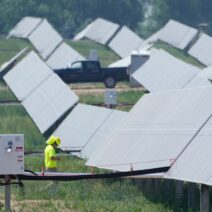Climate change is an omnipresent and insidious threat that looms over our planet. Often, when individuals consider its main contributors, they may think exclusively of the fossil fuel industry, greenhouse gas emissions from vehicles, or deforestation. However, the reality is far more complex and multifaceted. Have you ever pondered what other surprising factors might be fueling this global crisis? Let us embark on an exploratory journey to uncover the myriad contributors to climate change, some of which may ignite a sense of astonishment.
To begin, one of the most significant culprits is the reliance on fossil fuels. The combustion of coal, oil, and natural gas for energy generates an immense volume of carbon dioxide (CO2) and other greenhouse gases. This process has been at the forefront of industrial activity for over a century, propelling economic advancement while simultaneously enhancing the planet’s vulnerability to climate change. Every home heated by natural gas or every car fueled by gasoline emits CO2, perpetuating a cycle of dependence. But isn’t it intriguing to consider the alternatives? The rise of renewable energy sources, such as wind, solar, and hydropower, presents a pivotal challenge to this entrenched paradigm.
Delving deeper, agriculture stands as another profound contributor to climate change, yet it often lingers in the shadows of public discourse. This sector generates approximately 25% of global greenhouse gas emissions. As emissions from livestock operations, particularly methane released from enteric fermentation, proliferate, the consequences are dire. Cattle and other ruminants produce significant amounts of methane, a gas that is over 25 times more potent than CO2 over a period of 100 years. Indubitably, the agricultural practices we cherish must be scrutinized. Moreover, fertilizer use, land-use change, and the transportation of food exacerbate the predicament. Could a shift toward sustainable farming practices make a substantial difference?
Urbanization is yet another dimension that requires attention. As cities expand, the carbon footprint of infrastructure grows disproportionately. Concrete jungles may appear glamorous, but the energy consumed in heating, cooling, and powering buildings leads to exponential increases in greenhouse gas emissions. Additionally, urban transport systems heavily reliant on fossil fuels contribute to air pollution, negatively impacting human health and the environment. Imagine the possibilities if cities embraced green architecture and efficient public transport systems. The environmental landscape might transform dramatically.
Next, the deforestation phenomenon looms large, heralding the profound implications it has on climate change. Forests act as carbon sinks, sequestering CO2 from the atmosphere. Yet, in a rather jarring turn, substantial areas of forest are vanishing at an alarming rate due to logging, agriculture, and urban expansion. This loss not only contributes to climate change through the release of stored carbon but also diminishes biodiversity and disrupts ecosystems. It prompts the inquiry: what innovative solutions could we devise to conserve and restore our forests? The introduction of reforestation initiatives and sustainable land management practices could yield transformative results.
Furthermore, industrial processes generate a considerable percentage of greenhouse gases. From the manufacturing of cement to the production of chemicals, the energy-intensive operations involved in producing consumer goods are often overlooked in discussions of climate change. Notably, cement production alone accounts for approximately 8% of global CO2 emissions. Targeted innovations such as carbon capture technologies might offer pathways to mitigate these emissions. Is there not a pressing imperative to revolutionize our approach to manufacturing?
Contemplating waste management unveils another layer of complexity in our understanding of climate change. The decomposition of organic waste in landfills generates methane, a potent greenhouse gas. While recycling and composting initiatives gain traction globally, the sheer volume of waste we produce continues to mount. In this respect, a paradigm shift towards a circular economy—where materials are recycled and reused rather than discarded—could alleviate some of the climate pressures. Are we ready to embrace our consumer habits and prioritizing sustainability?
Surprisingly, even demographics play a role in climate change dynamics. Population growth accelerates consumption and resource depletion. As the global population surges towards an estimated 9.7 billion by 2050, the earth will bear the brunt of increased demand for food, water, and energy. This reality raises a provocative challenge: how can society balance growth with sustainability? Implementing educational initiatives and promoting responsible family planning could mitigate ecological strain.
Last but not least, we must consider the effects of climate change itself on future contributors. The changing climate influences natural feedback mechanisms—such as the melting of polar ice caps and permafrost—which release additional greenhouse gases previously locked in ice. Will the cycle perpetuate itself, or can humanity intervene to disrupt this feedback loop effectively?
In conclusion, the myriad contributors to climate change form an intricate web of intertwined factors, each demanding our attention. From fossil fuel reliance to agricultural practices, urbanization, deforestation, industrial processes, waste management, demographic trends, and even the climate’s own feedback mechanisms, the list is undeniably extensive. The challenge remains: how can we collectively harness innovative solutions to assuage the climate crisis? The answer may lie in our willingness to rethink, recalibrate, and ultimately act. Are you ready to meet the challenge head-on, uncovering unexpected realities that could reshape our planet’s future?







